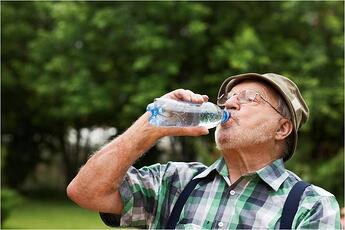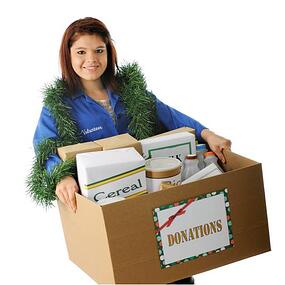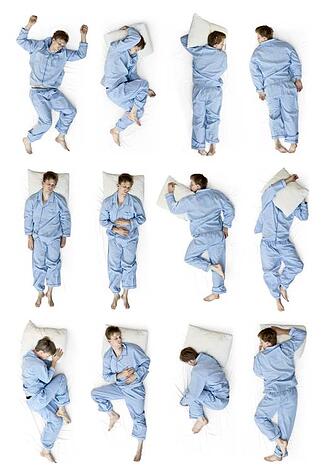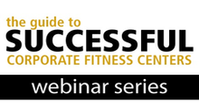Getting enough sleep is important to all areas of your health. According to a study from Harvard Medical School, “Chronic sleep loss can contribute to health problems such as weight gain, high blood pressure, and a decrease in the immune system’s power.” I know, if I don’t get enough sleep, it affects my mood and performance level.
Working at a senior living community, I am asked by residents, “how can you get the necessary sleep you need when you toss and turn and just don’t sleep well?” Some of the biggest concerns from seniors I hear about not sleeping well involve muscle cramps that wake them up, not being able to clear their minds to stay asleep and frequent trips to the restroom. I believe there are 5 key ways to get a more restful night’s sleep. I’ve shared these with my residents and I hope they can work for you as well.
 Drink Water Throughout the Day. When I am busy, I find I rarely get enough water throughout my day. By the time night comes, I am super thirsty. It is hard to get enough water close to bed. Not only that, if I drink a lot before bed, I find myself waking up to use the restroom, which interrupts my restful sleep. Another negative side effect to not drinking enough water is muscle cramps. Dehydration can increase the likelihood of muscle cramps while sleeping.
Drink Water Throughout the Day. When I am busy, I find I rarely get enough water throughout my day. By the time night comes, I am super thirsty. It is hard to get enough water close to bed. Not only that, if I drink a lot before bed, I find myself waking up to use the restroom, which interrupts my restful sleep. Another negative side effect to not drinking enough water is muscle cramps. Dehydration can increase the likelihood of muscle cramps while sleeping.- Take a Warm Bath or Shower. I have heard this is because the warmth of the water increases your body temperature and when you sleep, your body temperature decreases. This may be true, but for me the reason a warm shower works is it relaxes my tight, tired muscles. The warmth releases tension and helps ease my aches and pains from daily activities and exercise.
- Stretch. This goes hand-in-hand with the warm shower. You can get a better night’s sleep when your muscles aren’t tight and painful. I have found light stretching in my bed before I close my eyes gets my body ready for sleep. I concentrate on lower body, hip, and back stretches. I hold each stretch for at least 30-60 seconds. I close my eyes, take long and deep breaths, and focus on relaxing the muscles as I stretch them.
- Breathe. This is very important while stretching, but deep breathing throughout the day also helps reduce stress. When I am frustrated or upset, taking three-four deep belly breaths helps me calm down and refocus. At night this deep breathing is good because it helps clear my mind. After I finish my stretching routine, I lie flat on my back with my eyes closed and focus on breathing. In yoga, this is called savasana or corpse pose. It is beneficial because it helps your memory, reduces heart rate and blood pressure, increases oxygen levels in your blood, reduces headaches, and helps improve your focus.
- Reduce the Distractions in your Bedroom. This is by far the hardest thing for me to practice. Turning off the TV, putting the book away, and not sleeping with my smart phone next to my bed have helped me go to sleep faster. Picking up my cell phone to check email, the weather, and social media means I stay awake longer than I need to. The noises and distractions can also interrupt restful sleep, so put them away.
Tonight, may you sleep soundly after a day of drinking water, taking a warm bath or shower, stretching, breathing, and relaxing without any distractions; Sweet Dreams!

 Drink Water Throughout the Day.
Drink Water Throughout the Day. 
 If smiling is contagious and laughter is infectious, then why don’t more of us do it? When people laugh together, it brings them closer, and creates happiness and intimacy. Laughter not only does these few things, but it also causes physical changes within the body.
If smiling is contagious and laughter is infectious, then why don’t more of us do it? When people laugh together, it brings them closer, and creates happiness and intimacy. Laughter not only does these few things, but it also causes physical changes within the body.  The holidays are right around the corner and what better way to spread holiday cheer than to volunteer! Fall sports are starting to wind down with the winter rolling in, big projects at work are wrapping up, and schedules start to open up for new activities to fill in. The holidays are the perfect time to sign the family up for a volunteer day to share some of your good wealth.
The holidays are right around the corner and what better way to spread holiday cheer than to volunteer! Fall sports are starting to wind down with the winter rolling in, big projects at work are wrapping up, and schedules start to open up for new activities to fill in. The holidays are the perfect time to sign the family up for a volunteer day to share some of your good wealth. 
 Have you ever woken up and felt like you never slept at all and could hibernate for weeks upon weeks? You know, it’s similar to that back-to-work Monday feeling. The average person spends one third of their life sleeping, so it may be good to consider your
Have you ever woken up and felt like you never slept at all and could hibernate for weeks upon weeks? You know, it’s similar to that back-to-work Monday feeling. The average person spends one third of their life sleeping, so it may be good to consider your 
 For the past couple of months, we have been able to enjoy the nice, warm weather, cookouts, vacations, and even those occasional lazy days. While summer is not quite over, this time of year marks getting back to your everyday grind, preparing children to go back to school and hopefully including fitness in both of those plans. Why is it important to include fitness you ask? Well, it is no secret that
For the past couple of months, we have been able to enjoy the nice, warm weather, cookouts, vacations, and even those occasional lazy days. While summer is not quite over, this time of year marks getting back to your everyday grind, preparing children to go back to school and hopefully including fitness in both of those plans. Why is it important to include fitness you ask? Well, it is no secret that  Often when we think or talk about having good health, it consists of eating healthy foods and exercising. There are many areas of our lives that we could improve upon health wise—often it seems like there is so much to work on to keep track. However, one segment of health that seems to go by the way side is mental health. Just as muscles lose strength or cardiovascular fitness declines with age, your brain can lose agility and decline in the way that it functions. There is no one way to prevent degenerative diseases of the brain such as Alzheimer’s, but you can start today with the way you live your life to help make your brain healthier. Here are a few tips for great
Often when we think or talk about having good health, it consists of eating healthy foods and exercising. There are many areas of our lives that we could improve upon health wise—often it seems like there is so much to work on to keep track. However, one segment of health that seems to go by the way side is mental health. Just as muscles lose strength or cardiovascular fitness declines with age, your brain can lose agility and decline in the way that it functions. There is no one way to prevent degenerative diseases of the brain such as Alzheimer’s, but you can start today with the way you live your life to help make your brain healthier. Here are a few tips for great 

 Ten years ago I decided to run my first half marathon. I have never been much of a runner, so I wanted to challenge myself. I went straight to my local department store and bought a new pair of shoes and hit the pavement. After a few weeks, I started to notice some knee pain. It got worse as I went into longer runs and eventually my back started getting the aches as well. When the pain became too much, I went to see my physician. His first reaction was for me to buy new shoes and a pair of inserts. Could this really be the only reason for my excruciating pain?
Ten years ago I decided to run my first half marathon. I have never been much of a runner, so I wanted to challenge myself. I went straight to my local department store and bought a new pair of shoes and hit the pavement. After a few weeks, I started to notice some knee pain. It got worse as I went into longer runs and eventually my back started getting the aches as well. When the pain became too much, I went to see my physician. His first reaction was for me to buy new shoes and a pair of inserts. Could this really be the only reason for my excruciating pain?
 Did you enjoy yourself a bit too much while watching the big game on Sunday night? Did you vow to stop at three chicken wings and one beer? Did the wings and beer turn into a dozen chicken wings, plus two pieces of pizza, and more artichoke spinach dip then you’d like to recall? Despite our intentions to practice some self-control, we all over-do-it with food and alcohol sometimes. Don’t let one night or even several days of poor eating habits discourage you from chasing after the goals you set for yourself this year.
Did you enjoy yourself a bit too much while watching the big game on Sunday night? Did you vow to stop at three chicken wings and one beer? Did the wings and beer turn into a dozen chicken wings, plus two pieces of pizza, and more artichoke spinach dip then you’d like to recall? Despite our intentions to practice some self-control, we all over-do-it with food and alcohol sometimes. Don’t let one night or even several days of poor eating habits discourage you from chasing after the goals you set for yourself this year.